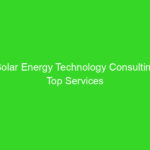
Solar Energy Minnesota: A Comprehensive Guide
Minnesota is one of the states in the United States with a significant potential for solar energy generation. The state is blessed with abundant sunshine, making it an ideal location for solar power projects.
As the world shifts towards renewable energy sources, solar energy has become one of the most popular options. This guide will provide you with everything you need to know about solar energy in Minnesota, including the benefits, the challenges, and how to get started.
Benefits of Solar Energy in Minnesota
-
Save Money: Solar energy can help households and businesses save money on their energy bills. With solar panels, you can generate your electricity, reducing your reliance on the grid. This can result in significant savings in the long run.
-
Reduce Carbon Footprint: Solar energy is a clean and renewable source of energy. By using solar power, you can reduce your carbon footprint and contribute to the fight against climate change.
-
Increase Property Value: Solar power systems can increase the value of your property. If you plan to sell your home or business, the solar panels can be a significant selling point.
-
Generate Income: In Minnesota, you can sell excess solar energy you generate back to the grid through a process called net metering. This can result in additional income for households and businesses.
Challenges of Solar Energy in Minnesota
-
Weather Conditions: Although Minnesota has abundant sunshine, the weather conditions can be challenging. The state experiences extreme temperatures, and during winter, snow can accumulate on solar panels, reducing their efficiency.
-
Upfront Costs: The upfront costs of installing a solar power system can be significant. However, with the available incentives, rebates, and tax credits, the long-term savings can offset the initial investment.
-
Availability of Grid Connection: In remote areas, it may be challenging to connect to the grid, making it difficult to access solar power.
-
Maintenance: Solar panels require regular maintenance to ensure their optimal performance. The maintenance costs can be an additional expense to consider.
How to Get Started with Solar Energy in Minnesota
-
Evaluate Your Energy Needs: Before installing a solar power system, it is essential to evaluate your energy needs. You can start by monitoring your energy consumption to determine the size of the system required.
-
Find a Reputable Solar Installer: Find a reputable solar installer in Minnesota to discuss your energy needs and determine the best system for your home or business.
-
Apply for Incentives and Rebates: Minnesota offers several incentives and rebates to encourage the adoption of solar energy. You can contact your installer or visit the official Minnesota Department of Commerce website to learn more.
-
Install Your Solar Power System: After evaluating your energy needs, finding a reputable installer, and applying for incentives, it is time to install your solar power system.
-
Monitor Your Energy Consumption: After installation, monitor your energy consumption closely to ensure that your solar power system is working correctly.
Conclusion
Solar energy presents an excellent opportunity for households and businesses in Minnesota to save money, reduce their carbon footprint, and generate income. Although there are challenges, the benefits outweigh the disadvantages.
If you are considering solar energy in Minnesota, evaluate your energy needs, find a reputable installer, apply for incentives, and install your solar power system. With the right system in place, you can enjoy the benefits of solar power for years to come.





